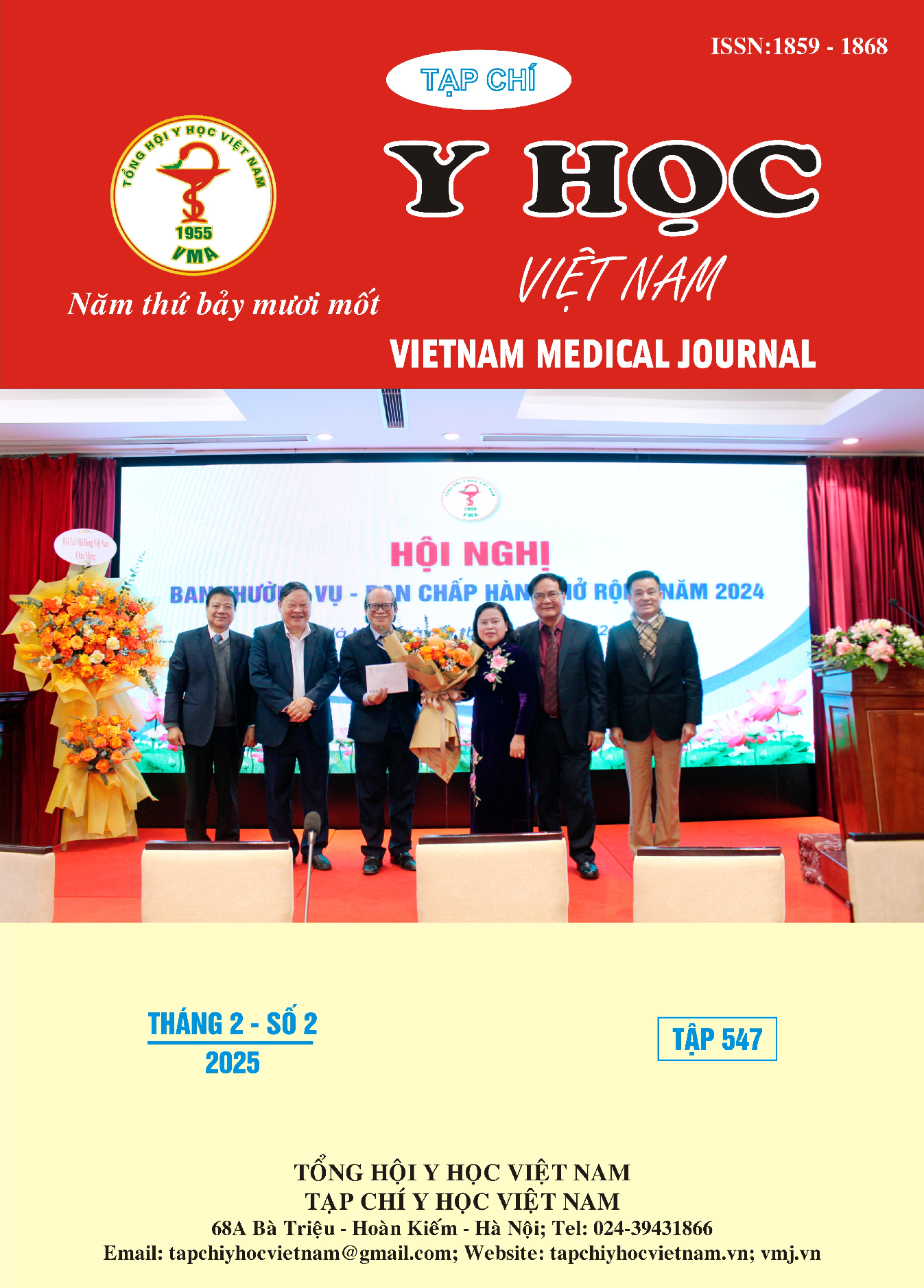EFFECTIVENESS OF THE METHOD OF CONNECTING BROKEN CANALICULUS TO TRAUMA USING SELF-FIXING SILICON TUBES AT NGHE AN EYE HOSPITAL
Main Article Content
Abstract
Objectives: Evaluate the treatment results of traumatic canaliculus anastomosis using self-fixing silicone. Subjects and methods: Descriptive, prospective, clinical interventional, uncontrolled study on 31 patients with traumatic canaliculus rupture treated with single canaliculus mini monoka Silicon tube placement surgery from January 2023 to May /2024 at Nghe An Eye Hospital. Results: The method of using the Mini - Monoka tube in surgical treatment of canaliculus rupture brings high success rates in terms of anatomy, function and aesthetics. The overall success rate assessed at 3 months after surgery was 88.57%. Of which, anatomical success reached 94.29%, functional success reached 83.9% and aesthetic success reached 93.5%. Using the Mini - Monoka tube in canaliculus surgery has many advantages: no misdirection, no damage to the healthy lacrimal tube on the same side, reduced rate of early tube loss, and reduced complications of corneal conjunctival damage.
Article Details
Keywords
broken canaliculus, self-fixing silicon tubes, Mini – Monoka.
References
2. Đỗ Long và Cs (2013), “ Nghiên cứu đặc điểm lâm sàng và kết quả điều trị đứt lệ quản do chấn thương”. Y học thực hành. 6: p. 83-85.
3. Nguyễn Thị Tuyết Nga (2010), “Đánh giá kết quả phương pháp đặt ống silicon một lệ quản điều trị đứt lệ quản do chấn thương”, Luận văn Thạc sỹ y học, Trường Đại học Y Hà Nội.
4. Han J, Chen H, Wang T, Zhang X, Jin X. A case series study of lacrimal canalicular laceration repair with the bi-canalicular stent. Gland Surg. 2022 Nov; 36518799, 11(11):1801-1807. doi: 10.21037/gs-22-556. PMID:; PMC9742051.
5. Alam MS, Mehta NS, Mukherjee B. Anatomical and functional outcomes of canalicular laceration repair with self retaining mini-MONOKA stent. Saudi J Ophthalmol. 2017 Jul-Sep; 28860909, 31(3):135-139. doi: 10.1016/j.sjopt.2017.04.009.
6. Pandey TR, Limbu B, Sthapit PR, Gurung HB, Saiju R, et al. (2021) Clinical Outcome of Reconstruction of Lacrimal Canalicular Laceration with Monocanalicular Intubation System. Int J Ophthalmic Pathol 10:7.
7. Men, C. J., Ko, A. C., Ediriwickrema, L. S., Liu, C. Y., Kikkawa, D. O., & Korn, B. S. (2020). Canalicular laceration repair using a self-retaining, bicanalicular, hydrophilic nasolacrimal stent. Orbit, 40(3), 239–242. https://doi.org/ 10.1080/01676830.202.
8. Ali MJ, Paulsen F. Human Lacrimal Drainage System Reconstruction, Recanalization, and Regeneration. Curr Eye Res. 2020 Mar; 30793623., 45(3):241-252. doi: 10.1080/ 02713683.2019.1580376.
9. Kim T, Yeo CH, Chung KJ, Lee JH, Kim YH. Repair of Lower Canalicular Laceration Using the Mini-Monoka Stent: Primary and Revisional Repairs. J Craniofac Surg. 2018 Jun; 29561477., 29(4): 949-952. doi: 10.1097/SCS. 0000000000004423.
10. ÇORAK EROĞLU, Emine ŞEN, Burcu KAZANCI Turkiye Klinikleri J Ophthalmol. 2024; 33(2): 87-93, doi: 10.5336/ophthal.2023-100635.


